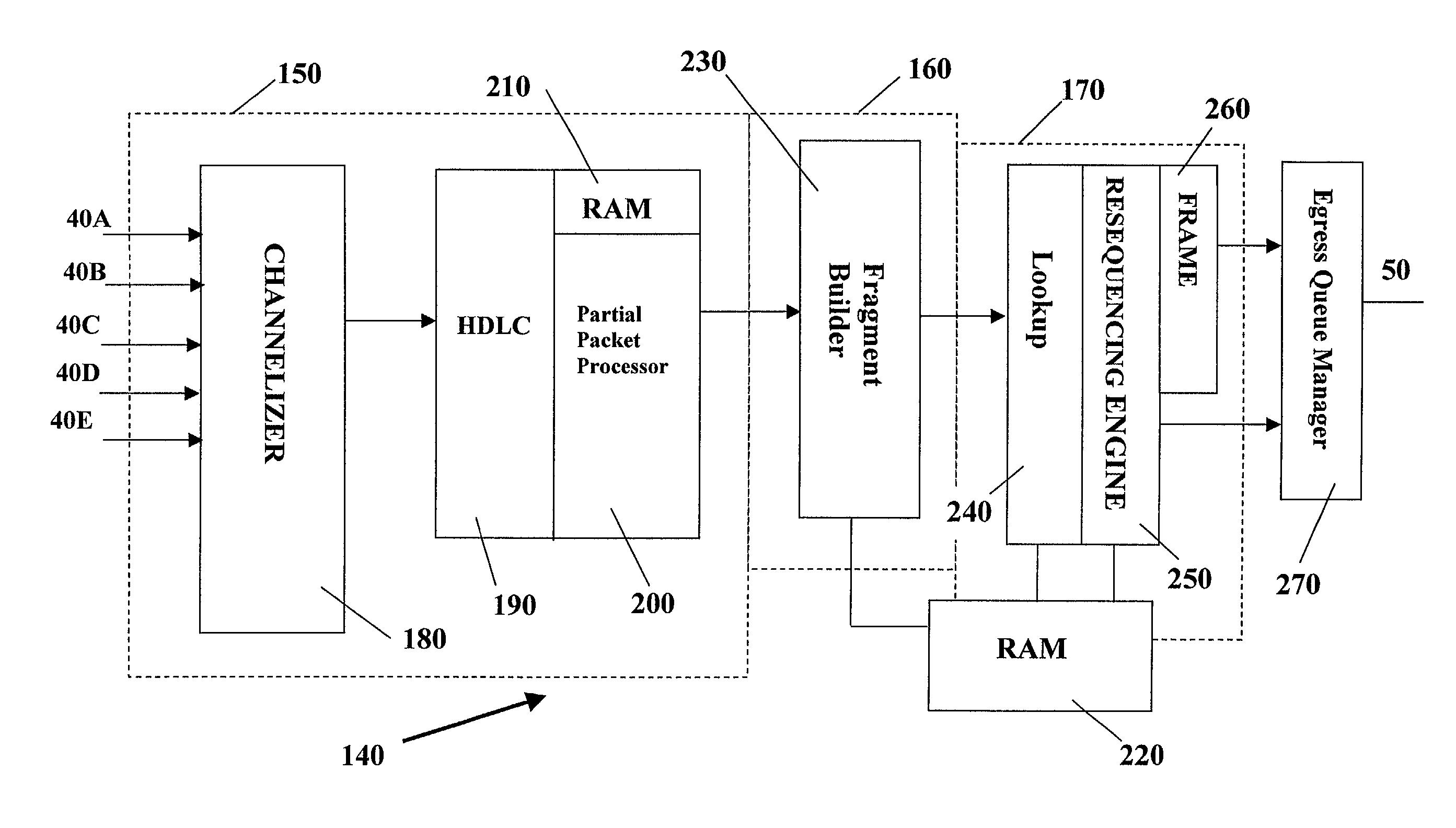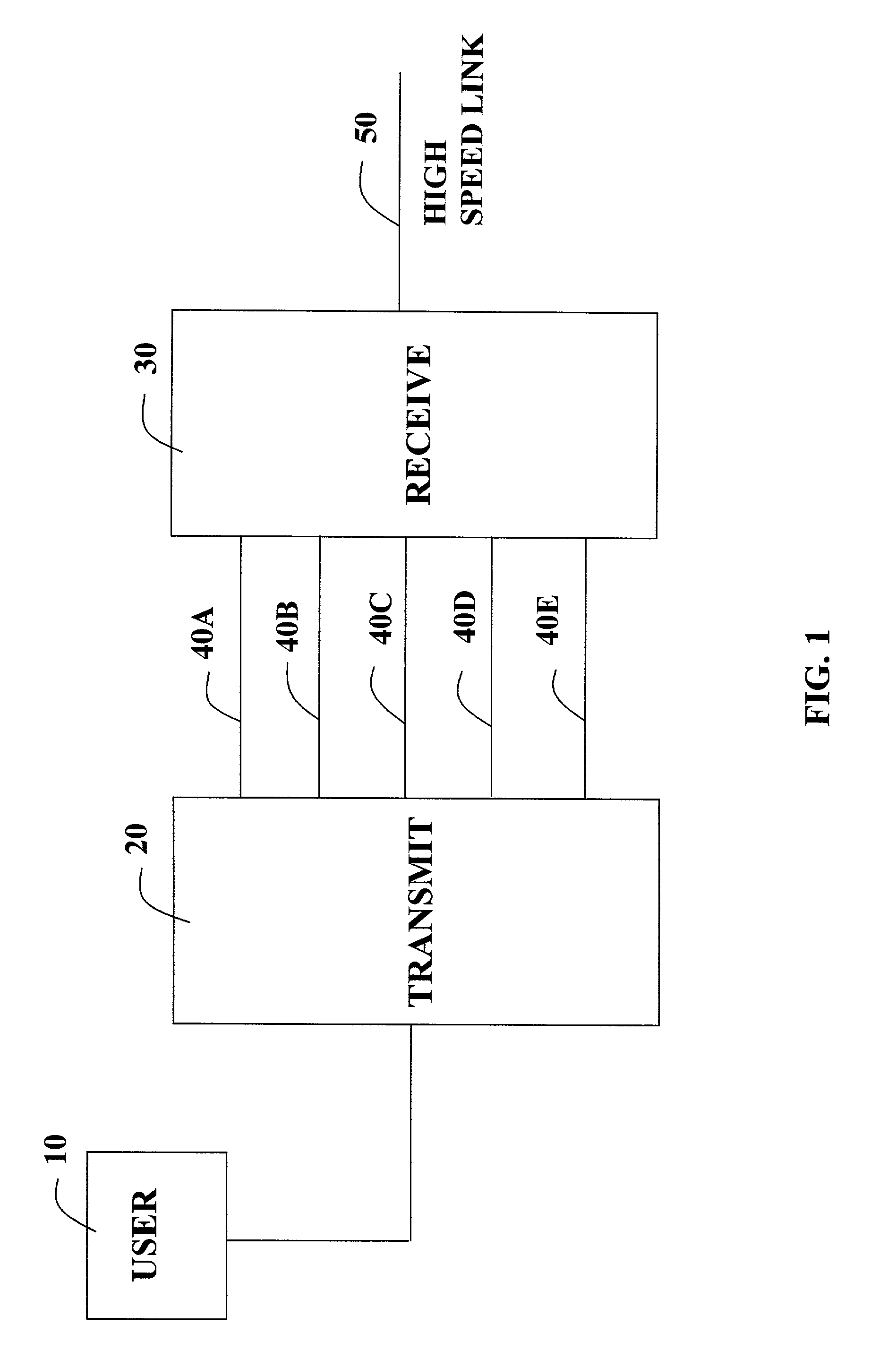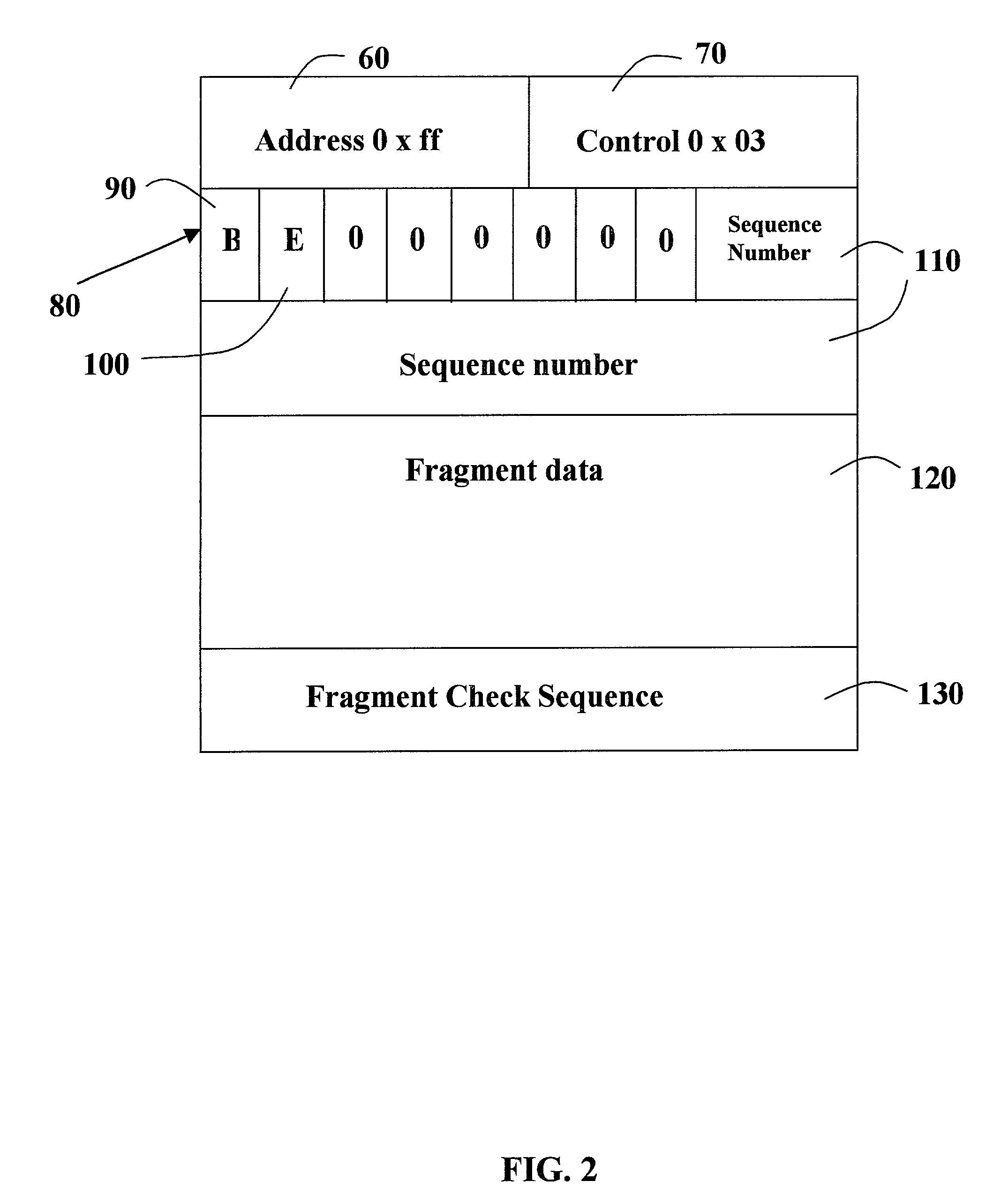Reassembly engines for multilink applications
a multi-link application and assembly engine technology, applied in the field of computer networking, can solve problems such as inconvenient jumping for users, technical problems arose, and do not specifically address multiple-link applications
- Summary
- Abstract
- Description
- Claims
- Application Information
AI Technical Summary
Benefits of technology
Problems solved by technology
Method used
Image
Examples
Embodiment Construction
[0092]To clarify the following description, a brief description of the process executed on a packet to be sent on a multiple link bundle system will be described. It should be noted that a multiple link bundle is a collection of data links between two nodes with the links being collectively used to increase bandwidth by utilizing them as if they were a single link.
[0093]Refenlng to FIG. 1, a user 10 is connected to a transmh node 20. The transmit node 20 is connected to receive node 30 by way of “low speed” links 40A, 40B, 40C, 40D, 40E. The receive node 30 is coupled to a high speed link 50. It should be noted that the terms “high speed” and “low speed” are relative to each other and are only used for illustration purposes. Thus, each of the links 40A, 40B, 40C, 40D, 40E can be T1 lines transmitting at 1.544 mbps while the link 50 can be a T3 line operating at around 45 mbps. It should be noted that while T1 lines are used in this example, other types and speeds of links may be use...
PUM
 Login to View More
Login to View More Abstract
Description
Claims
Application Information
 Login to View More
Login to View More - R&D
- Intellectual Property
- Life Sciences
- Materials
- Tech Scout
- Unparalleled Data Quality
- Higher Quality Content
- 60% Fewer Hallucinations
Browse by: Latest US Patents, China's latest patents, Technical Efficacy Thesaurus, Application Domain, Technology Topic, Popular Technical Reports.
© 2025 PatSnap. All rights reserved.Legal|Privacy policy|Modern Slavery Act Transparency Statement|Sitemap|About US| Contact US: help@patsnap.com



